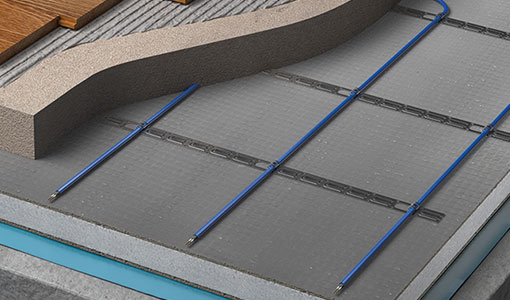Vermont, famous for its scenic landscapes and harsh winters, requires a reliable and efficient home heating system to keep its residents and visitors warm. This guide explores the best options for this unique climate, and considers comfort, efficiency, and sustainability. We’ll discuss forced air furnaces, heat pumps, wood and pellet stoves, and focus on the increasingly popular radiant floor heating systems.

Discover their thermal performance, cost savings, and feasibility for Vermont homes. Whether you’re building or upgrading, you can make an informed decision tailored to your needs with this guide.
Considerations for Vermont’s Climate
Vermont’s winters are known for their severity, with heavy snowfall and freezing temperatures commonplace from late fall to early spring. This necessitates a heating system that can consistently provide high levels of heat output. Vermont’s rural topography and the prevalence of older, drafty homes can present further challenges to maintaining a comfortable indoor climate.
To withstand these factors, a heating system should have superior insulation properties and be capable of operating efficiently in such conditions.
Popular Heating Systems for Vermont
Forced Air Furnaces
Forced air furnaces are a popular choice among Vermont residents due to their effectiveness and reliability in harsh winter conditions. These systems operate by heating air within a furnace and distributing it throughout the home via ductwork and vents. The heat is regulated by a thermostat that allows residents to conveniently adjust the temperature according to their comfort.
Pros
Forced air furnaces offer the advantage of rapid and uniform heating, and they can be fueled by various sources such as natural gas, oil, or propane.
Cons
However, one downside is that they can potentially circulate allergens and dust throughout the home, which could be a concern for those with respiratory conditions.
Heat Pumps (Air Source and Ground Source)
Heat pumps, including both air source and ground source types, are becoming increasingly popular in Vermont due to their high energy efficiency and versatility.
Air Source
An air source heat pump operates by drawing heat from the outdoor air and transferring it indoors, to effectively provide heating during the winter months.
Pros
Heat pumps offer a more cost-effective alternative to combustion-based systems. By prioritizing energy efficiency, you can enjoy significant long-term savings on energy expenses.
Cons
Air source heat pumps can be prone to issues like icing in cold temperatures, which can lead to potential damage to the system. The efficiency of heat pumps decreases when temperatures fall between 25 and 40 degrees Fahrenheit. This can be a big issue for heating in the cold environs of Vermont.
Ground Source
Ground source (or geothermal) heat pumps utilize the Earth’s consistent temperature by exchanging heat between your home and the ground or a nearby water source.
Pros
The energy output of these systems is approximately 3-4 times higher than the energy needed to operate them. They are an excellent option if you’re seeking low-carbon heating solutions since they don’t emit carbon on-site.
Cons
One potential downside of a geothermal heat pump is its higher initial installation cost. The installation process may also require digging up soil to install the connecting pipe for the heat pump, which can add to the overall cost.
Wood and Pellet Stoves
Wood and pellet stoves are another traditional yet reliable choice for Vermont homes that appeals to those who prefer a more rustic, hands-on approach to heating. These systems burn wood or pellets, which are typically made from compacted sawdust or other organic waste materials, to produce heat.
Pros
Wood stoves have been a staple in Vermont homes for centuries and they continue to be favored for their simplicity, ambiance, and the ability to operate independently of electricity.
Cons
They require a steady supply of firewood which can be labor-intensive to store and handle.
Radiant Floor Heating

Radiant floor heating is an innovative option growing in popularity among Vermont homeowners seeking the best heating system for their homes. As the name suggests, radiant floor heating systems deliver heat directly from the floor, for a unique combination of comfort, efficiency, and aesthetic appeal. This heating method uses either electric resistance elements or hydronic (water-based) systems to heat the floor, which then radiates the heat upwards to warm up the room.
Energy Efficiency
One of the most significant advantages of radiant floor heating is its energy efficiency. Unlike forced-air systems, radiant heating minimizes heat loss as it heats the objects in the room rather than the air. This can result in substantial energy savings over time, which is an attractive option for eco-conscious homeowners in Vermont.
Uniform Heat
Radiant floor heating provides a consistent, uniform heat distribution across the entire floor to eliminate cold spots and ensure the whole room is comfortably heated. This type of heating system is also remarkably quiet, because there are no fans or blowers to create noise. Another noteworthy aspect is that radiant floor heating eliminates the circulation of dust and allergens that can occur with forced-air systems, for a healthier indoor environment.
Energy Efficiency and Sustainability of Radiant Floor Heating

Thermal Performance
Electric radiant floor heating provides unparalleled thermal performance, especially in colder climates like Vermont. By distributing heat uniformly across the floor, it ensures even temperature levels throughout the room. This method not only eliminates cold spots but also optimizes the warmth felt by occupants, which makes it an ideal choice for maintaining consistent indoor temperatures during Vermont’s chilly months.
Cost Savings
The initial installation cost for electric radiant floor heating might be higher than traditional systems, but the long-term savings are significant. Thanks to its energy-efficient design, homeowners often experience reduced monthly energy bills.
Plus, with fewer moving parts than conventional heating systems, maintenance costs are minimized to result in a system that not only conserves energy but also keeps your wallet in mind. Use our Running Costs Calculator to get an idea of how much money you could save by installing Warmup heating in your home.
Exploring Radiant Floor Heating Systems
There are numerous options available for underfloor electric radiant heating systems. Some of the more popular choices include:
Heat Mats
Heat mats, such as those from Warmup, are a popular choice for electric underfloor heating due to their easy installation and effectiveness. They are available in different sizes and can be customized to accommodate the unique dimensions of any room:
Heat mats are especially suitable for larger spaces and rooms with irregular shapes.
The mats are thin, at just 1.8mm, and can be installed directly under the floor finish for a minimal increase in floor height.
Heat mats are energy-efficient, and they heat quickly and effectively with minimal heat loss.
DCM-PRO Uncoupling System
Systems like the DCM-PRO Uncoupling System by Warmup is another excellent choice for electric underfloor heating.
This system is unique because it combines heating and uncoupling properties into one handy solution.
The DCM-PRO System accommodates the natural expansion and contraction in the floor, to help mitigate the risk of tile delamination and cracking.
With the fastest heat-up time in the industry, this system delivers comfort efficiently.
The distinguishing feature of the DCM-PRO System lies in its capability to utilize Smart Thermostats. The 6iE Smart WiFi Thermostat is a device that not only learns your heating preferences, but also adapts to the specific characteristics of your home. By intelligently analyzing your usage patterns, it can provide personalized energy-saving recommendations.
Foil Heater System
The Foil Heater System from Warmup is another efficient and innovative heating solution. It is ideal for rooms with laminate, carpet and engineered wooden floors, and it ensures an even heat distribution across the floor surface. It’s designed as a dry installation where there’s no need for any adhesive, to make the process easier and quicker.
The system pairs well with Warmup’s 6iE Smart WiFi Thermostat, to further maximize energy efficiency through smart, automated heating schedules.
This cost-effective and user-friendly heating solution certainly warrants consideration from Vermont homeowners seeking the best heating system for their homes.
In-Slab Cable System

The Inslab Cable System is specifically designed for new concrete floors, which makes it an excellent choice for new builds or renovations in Vermont. The heating cables are installed directly into the concrete slab, which stores the heat and gradually releases it upward into the room. This creates a uniform heat distribution and a pleasant ambient temperature, even in the harshest winter weather.
Heat Your Vermont Home Right with Radiant Floor Heating Systems from Warmup
Don’t let the Vermont cold get to you—choose a radiant floor heating system from Warmup that best suits your needs and enjoy the comfort and efficiency it provides. Our radiant floor heating systems are designed to provide optimal heat distribution, energy efficiency, and comfort.
Why wait? Contact us today for more information and an instant quote.


